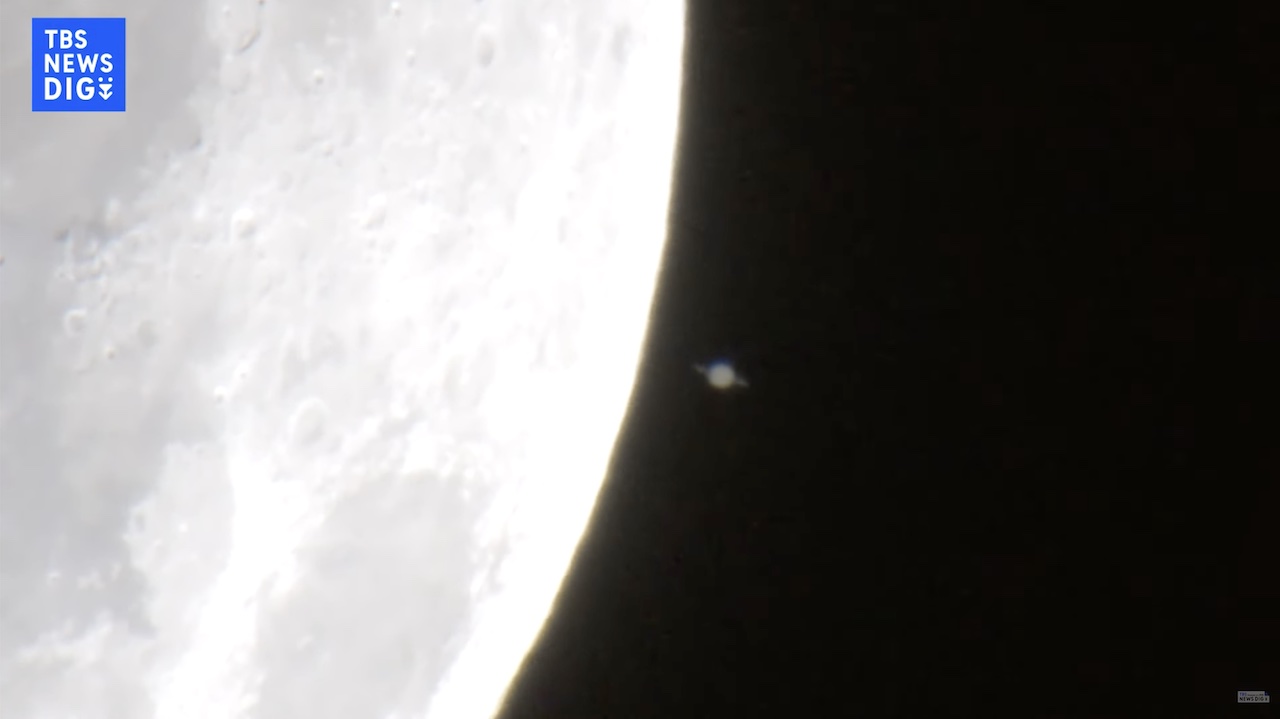TOKYO, Dec 10 (News On Japan) - The rare celestial event known as Saturn occultation, where Saturn hides behind the Moon, was visible Sunday night for the first time in 22 and a half years under conditions minimally affected by sunlight or moonlight.
While some areas of Japan did not experience the phenomenon, in the Kanto region, observers witnessed Saturn disappearing behind the Moon's "12 o'clock" position and reemerging at the "3 o'clock" position. The event was successfully photographed in remarkable detail, even capturing Saturn's rings.
Source: TBS
















